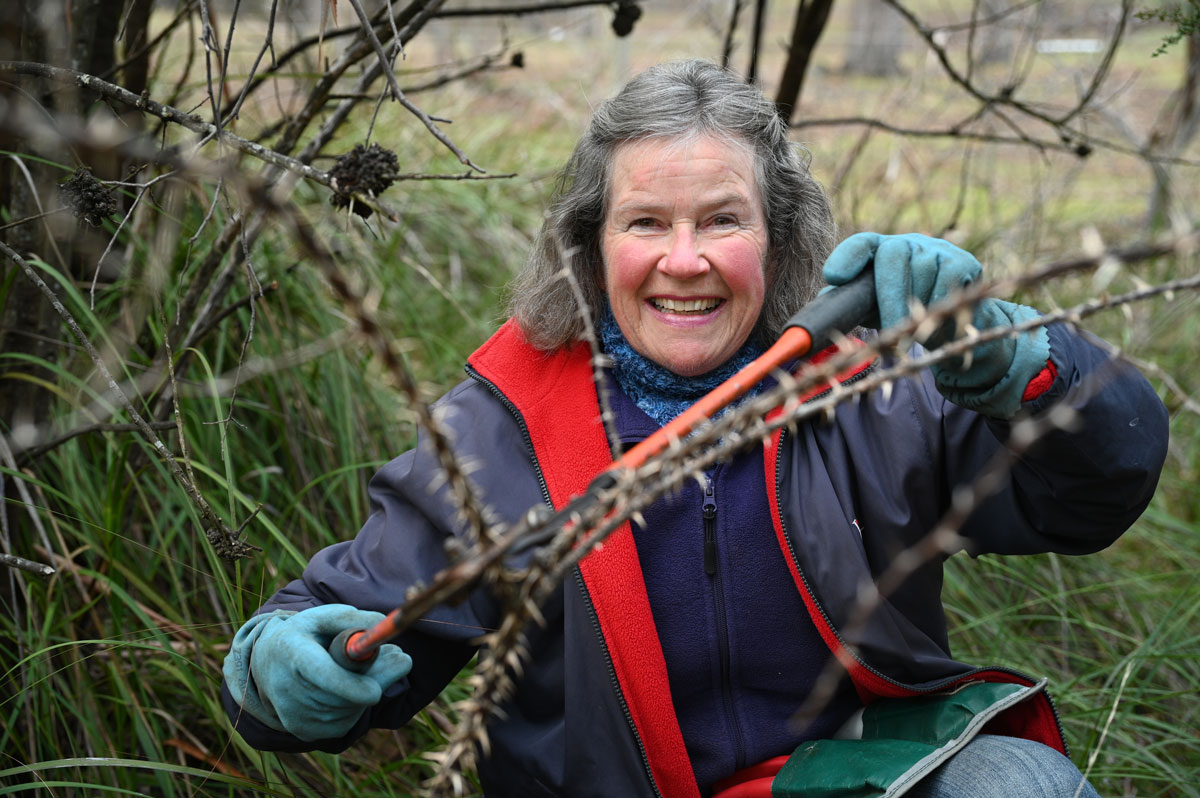
A weedy patch of bushland on the boundary of Hobart and Glenorchy is so much the better after volunteers from both sides of the fence took to it with secateurs, loppers and dabbers.
The forest above Barossa Rivulet off Kalang Avenue is strong and healthy, with Spanish heath, a highly invasive bushland weed, now under control.
But below Kalang Avenue it’s another story, with thorny environmental weeds like hawthorn, blackberry, boneseed and cotoneaster along, with old car bodies and dumped rubbish, infesting the gully.
"This patch of bushland has slipped under our radar for many years," says City of Hobart Bushcare Team Leader Bec Johnson.
"But our Bushcare volunteers have been working hard over the past three years to clear out this thorny wilderness and restore it to native bushland. We also pull out as much rubbish as we can.
"All of the non-native plants we are removing from this gully are very vigorous environmental weeds and quickly overwhelm and replace native bushland species.”
Bec says being out in the bush on a Bushcare working bee is wonderful for everyone’s mental health.
"It's a very healthy way to exercise, working together with a common purpose in the bush, learning bird calls, increasing our bush skills and making friends.
"Just bring sturdy boots and a sense of fun."

Bushcare team leader Bec Johnson with long-term volunteers Peter Franklin and Greg Kidd.
Down to business
Taking part in a Bushcare working bee is a great opportunity to learn new skills, such as ‘drill and fill’ – a method for dealing with the large woody weed cotoneaster, which is often too hard to cut with a hand saw.
Our Bushcare groups prefer to leave dead trees standing rather than cutting them down. The dead timber then provides shade, roosts for birds and possums and foraging space for fungivores as the trees decompose.

Thorny, woody weeds were no match for Trish Marsland.
Many hands make light work
We were also joined by volunteers from the Understorey Network and the Tasmanian Student Landcare Association.
Trish Marsland, a volunteer with the Riding for the Disabled School, also joined us and had a terrific time helping cut down the large woody weeds.
In between the two weeding sessions our volunteers were fuelled up with a delicious morning tea and a presentation from guest speaker Phil Wise, who coordinates the Tasmanian Land Conservancy's Land for Wildlife program.
We also had a fascinating discussion about the Thin Green Line foundation, which supports rangers and their families who put their lives on the line to protect land and wildlife.

Phil Wise from the Tasmanian Land Conservancy gave a great talk during our working bee break.
Join Bushcare!
If you would like to get involved in the City of Hobart Bushcare program, just grab a copy of our latest working bee program and turn up to Bushcare!
Learn more